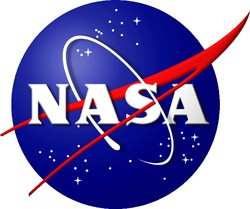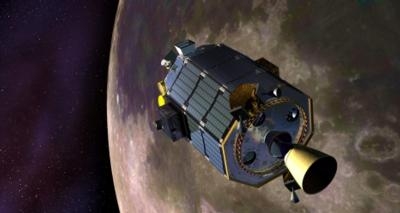Presentations Include Special Sessions On Fluids Found In Lunar Samples
New perspectives of the moon, initial results from the Lunar Atmosphere and Dust Environment Explorer (LADEE) mission and a geophysical perspective on the structure and evolution of planetary bodies will highlight the 45th Lunar and Planetary Science Conference March 17 to 21 near Houston.

The conference will include presentations on these topics and a special session on fluids found in samples from the moon, Mars and other planetary bodies. The conference will be held at The Woodlands Waterway Marriott Hotel and Convention Center in The Woodlands, Texas.
Other highlighted events include a NASA Headquarters briefing and a plenary session featuring the science of Apollo 15.
"Science results presented at this year's conference show the incredible diversity of discovery in planetary science," said Eileen Stansbery, director of the Astromaterials Research and Exploration Science Directorate at NASA's Johnson Space Center in Houston. "Being able to discuss the breadth of advances in understanding the bodies, events and processes at work in our solar system helps us determine directions for future mission concepts and fields of inquiry."
Recent and ongoing missions coupled with new data analyses have changed our view of the moon dramatically over the last decade. New scientific data produced from the Lunar Reconnaissance Orbiter (LRO), Gravity Recovery and Interior Laboratory, Chandrayaan-I and Kaguya lunar missions will be presented. Findings from these missions provide a fundamental scientific framework to base future missions. The session will begin at 8:30 a.m. CDT March 17.

The session featuring first results from the LADEE (pictured in NASA artist's rendering) mission is scheduled for 8:30 a.m. March 18. NASA's LADEE is a robotic mission to orbit the moon to gather detailed information about the structure and composition of the thin lunar atmosphere and determine whether dust is being lofted into the lunar sky. A thorough understanding of these characteristics will help researchers understand other bodies in the solar system such as large asteroids, Mercury and the moons of outer planets. Although the focus will be on results from the LADEE mission, the session will include relevant dust measurements from the LRO mission.
Geophysical techniques provide many ways of determining the interior structure, origin and evolution of planetary bodies. Many researchers are finding evidence of fluids in samples including those from the moon and Mars. Mineral-enriched veins found in the samples have been described. Sourcing the fluids that created these veins is vital to understanding the late-stage evolution on bodies and could have implications for the origin of life on Earth or Mars. This special session will be held at 1:30 p.m. March 18.
The NASA Headquarters briefing will be held at 5:30 p.m. March 17. James L. Green and Jonathan Rall of NASA's Science Mission Directorate will address the community.
The plenary session featuring the Masursky Lecture will be presented by Apollo 15 commander and retired Air Force Col. David R. Scott. His talk, "Masursky's Moon and the Science of Apollo 15," will discuss Harold "Hal" Masursky's contributions to Apollo 15 and how today's human exploration capabilities can be applied to four other lunar sites identified by Masursky and observed during Apollo 15. The talk will be at 1:30 p.m. March 17.
The conference is presented by the Lunar and Planetary Institute. LPI is managed by the Universities Space Research Association (USRA), a national, nonprofit consortium of universities chartered in 1969 by the National Academy of Sciences at the request of NASA. USRA operates programs and institutes focused on research and education in most of the disciplines engaged in space-related science and engineering. IA total of 105 leading research universities are USRA members.
(Image provided by NASA)
 Senator Pushes FAA to Accelerate Rocket Launch Licensing
Senator Pushes FAA to Accelerate Rocket Launch Licensing Classic Aero-TV: RJ Gritter - Part of Aviations Bright New Future
Classic Aero-TV: RJ Gritter - Part of Aviations Bright New Future Aero-FAQ: Dave Juwel's Aviation Marketing Stories -- ITBOA BNITBOB
Aero-FAQ: Dave Juwel's Aviation Marketing Stories -- ITBOA BNITBOB ANN's Daily Aero-Linx (10.27.24)
ANN's Daily Aero-Linx (10.27.24) ANN's Daily Aero-Term (10.27.24): Clearance Void If Not Off By (Time)
ANN's Daily Aero-Term (10.27.24): Clearance Void If Not Off By (Time)




